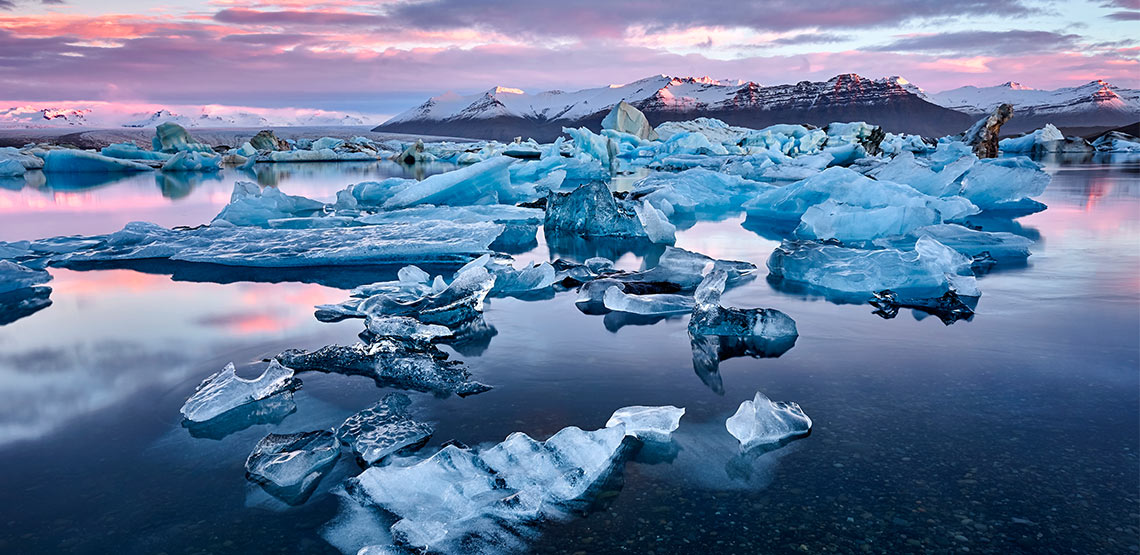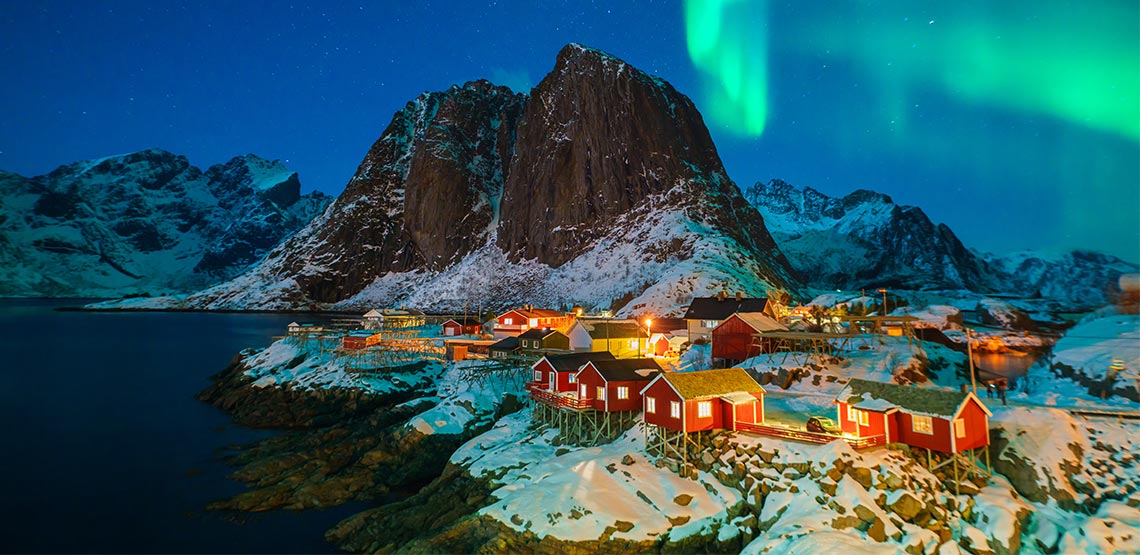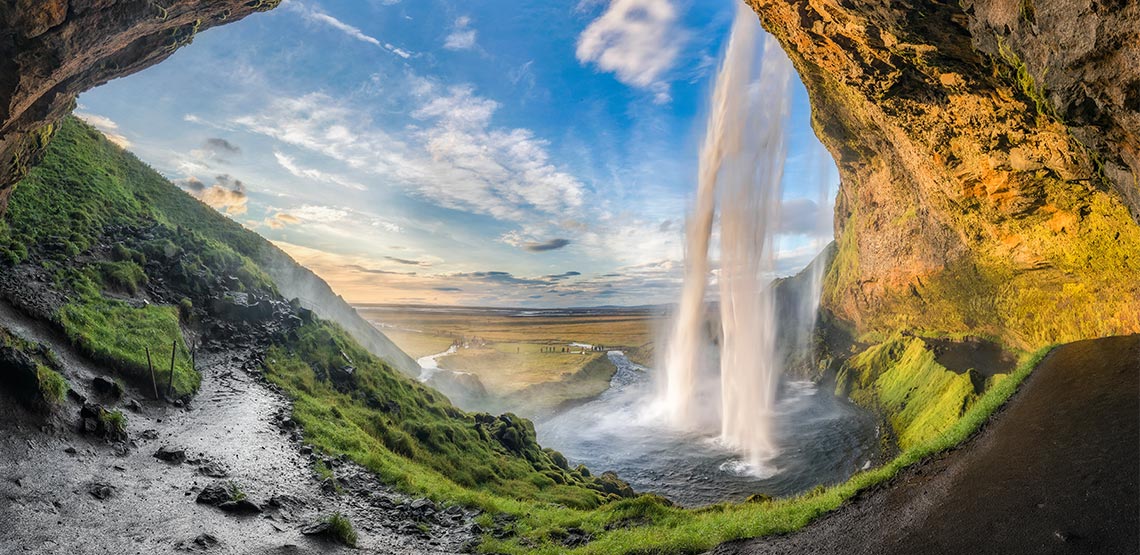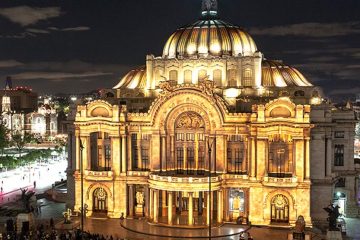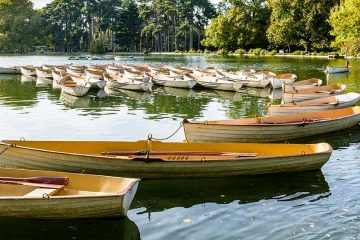Iceland Travel Guide: Planning a Trip to the Land of Dramatic Vistas
Incredible Sights Await
One of the hottest spots for tourism in recent years, and not just because of its hot springs and volcanic landscapes, Iceland is a place that everyone should experience at least once in their lifetime. From its countless dramatic waterfalls, jet-black-sand beaches and soaring mountains to magical Northern Lights and fascinating cities, this country truly offers a wealth of things to see and do.
Be warned, though — Iceland travel involves adventuring in scenery so stunning it looks like a fantasy world. So if you’re prepared to have your heart stolen, read on to learn about how to plan a trip to Iceland!
The Best Time to Travel to Iceland
There is a reason to go to Iceland in every season.
Summer
The summer months are the warmest, with June bringing the Midnight Sun, when Iceland experiences nearly 24 hours of daylight. Even then, however, rain and intense wind isn’t uncommon — you may experience all four seasons in just one day.
This is the most popular time to visit, with the biggest crowds of the year and the highest accommodation rates. By September the crowds have thinned and there is a good chance of decent weather along with plenty of daylight for seeing the sights.
Winter
Surprisingly, winter can be a great time to go. This is when you’re unlikely to have to battle too many tourists, and oftentimes the weather is better or comparable to what’s experienced in America’s northeast region.
From mid-October through March — a time which brings the greatest number of hours of darkness — you’ll have the best chance to witness the Aurora Borealis, though they do occasionally appear in September and as late as April. Viewing requires clear, dark conditions and a surge in solar activity.
This is also the season it’s possible to tour ice caves. Guided tours are available to bring you through the long, frozen chambers of the “Crystal Caves” in Iceland’s glaciers underneath a dazzling cathedral of translucent blue waves.
Tips to Travel Iceland Cheap
Iceland isn’t a cheap country to visit, but it’s well worth the cost and there are ways to make it more budget-friendly.
Airfare
Both Wow Air and Icelandair offer the opportunity to visit on a layover at no extra cost for up to a week when traveling to and from Ireland, the United Kingdom and mainland Europe, making it easy to squeeze in on another longer trip.
Summer airfares are almost always more expensive, but you can score great deals if you fly in the off-season, or even better, wintertime. During the off and shoulder seasons, tickets can be purchased for $200 USD round-trip from departure points like Boston and Washington, D.C. in the United States.
Accommodations and Food
As accommodations and dining out are what tend to cost the most once you’re there, you might want to consider renting a camper or RV. This is a great way to explore the Ring Road that circles the entire island, connecting the capital city of Reykjavik to Iceland’s second largest city, Akureyri, in the north.
Many include cooking facilities, making it easy to avoid spending a ton on pricey restaurant meals. Alternatively, book hotels with free breakfast, stop at local grocery stores for snacks or the country’s famous hot dogs during the day, and then just enjoy dinner out each evening.
Must-Dos
There is so much to see in Iceland; unless you visit for an extended period, you’re unlikely to be able to see and do it all. These must-dos are ideal for a first-time itinerary.
The Hot Springs
No Iceland travel guide is complete without mention of the Blue Lagoon. It’s on many travel bucket lists and worth experiencing at least once. Located in a lava field just a short drive from the international airport, it contains milky turquoise waters that are 98 to 102 degrees Fahrenheit year-round.
This tourist hot spot gets rather crowded, so you may want to consider visiting one of the more remote natural hot springs like Lake Myvatn in the north instead.
The Golden Circle Route
Traveling the popular Golden Circle tourist route is doable as a day trip from Reykjavik and will bring you to places like Golden Falls — also known as Gulfoss Falls. Often referred to as Iceland’s own version of Niagara Falls, it cascades down in two steps, one 36 feet high, and the other at 72 feet high, plunging into the rugged canyon below.
The Geysir Hot Spring Area is nearby and filled with boiling mud pits and erupting geysers like Strokkur, which skyrockets 100 feet into the air every five to 10 minutes.
We go over some of the best museums in Mexico City to show the ancient history, important historical figures and culture of the area.
The South Coast
The South Coast is jam-packed with natural wonders, including more of Iceland’s most breathtaking waterfalls such as Skogafoss. 80 feet across and dropping 60 feet, this waterfall has been spotlighted in numerous films and television shows, like the History Channel’s “Vikings.” As the high volume of water flows under the rays of the sun it produces a rainbow-yielding mist.
A short drive away is Seljalandsfoss, one of the most photographed falls in the country, plunging nearly 200 feet into a pool below. You can even walk around the pool to the back of the falls for an especially unique perspective.
The southernmost village in Iceland, Vik is most famous for its jet-black volcanic sand beach. Just off shore are spectacular rock formations that rise up out of the sea, like the Trolls of Vik.
Heading further east you’ll reach Jokulsarlon Glacier Lagoon, a large glacial lagoon that’s growing rapidly as the polar ice cap melts. Visitors can take a boat tour to hear the thundering sounds of ice breaking off the glacier. The ice shards drift down a short river and into the sea, but the waves turn some of them back to the black-sand beach where they lie scattered like gems.
Reykjavik
You won’t want to miss exploring Reykjavik either. The capital city’s most iconic landmark, Hallgrimskirkja Church, sits atop Skolavorduhaed Hill. It’s an ideal place to start as you’ll be able to ride an elevator to the top of Iceland’s largest church for a panoramic view of the land below.
Visit one of the world’s most unique attractions, the Icelandic Phallological Museum, better known as the “Penis Museum.” It holds a collection of over 200 phallic specimens that represent nearly every mammal in Iceland.
It’s fun just to stroll the streets here, with so many of the city walls and buildings decorated with vibrantly colored murals. Along the way you’ll find plenty of interesting shops to pop into, as well as great cafes and countless restaurants.
Preparing for the Weather and What to Bring
The weather in Iceland is rather unpredictable. That said, it’s not nearly as icy as what one would imagine. Even in the wintertime, temperatures generally hover right around freezing. When the wind hits, however, it can be brutal.
The key to comfort is layers. Be sure to pack thermal wear that provides extra insulation in the winter so you’ll be able to enjoy the outdoor sights. A good hat is a must too — you may want to buy one when you’re there, as the commonly worn fur-lined hats you’ll see locals wearing are readily available and make for a great souvenir. Waterproof boots, gloves and scarves are also essential.
Summer temperatures typically average in the high 50 degrees Fahrenheit range, so it’s not going to be especially warm. Dressing in layers then, as well as in fall and spring, is still a must as are gloves and hats. But bring a mix of long- and short-sleeve shirts just in case. The direct sunshine with long days of summer can make it feel five degrees warmer than it is.

